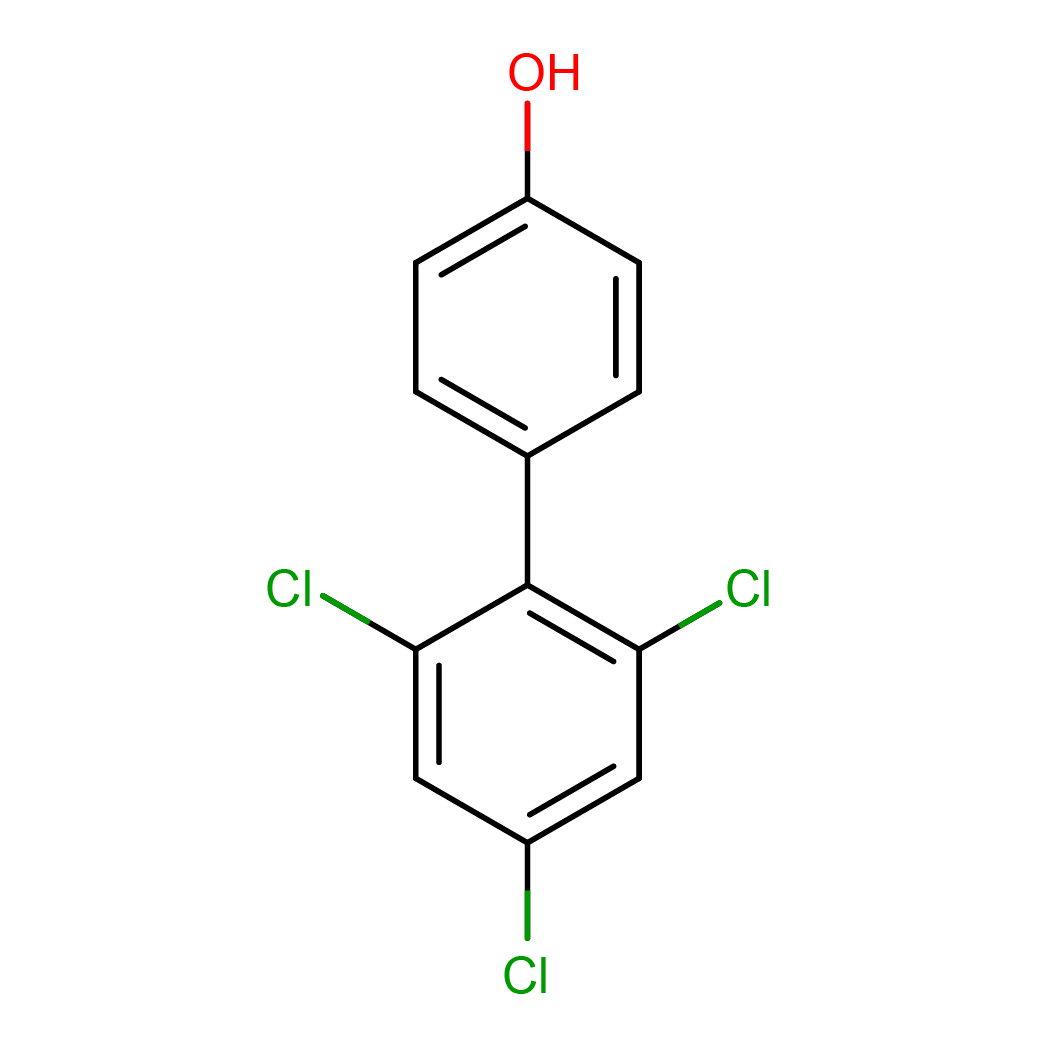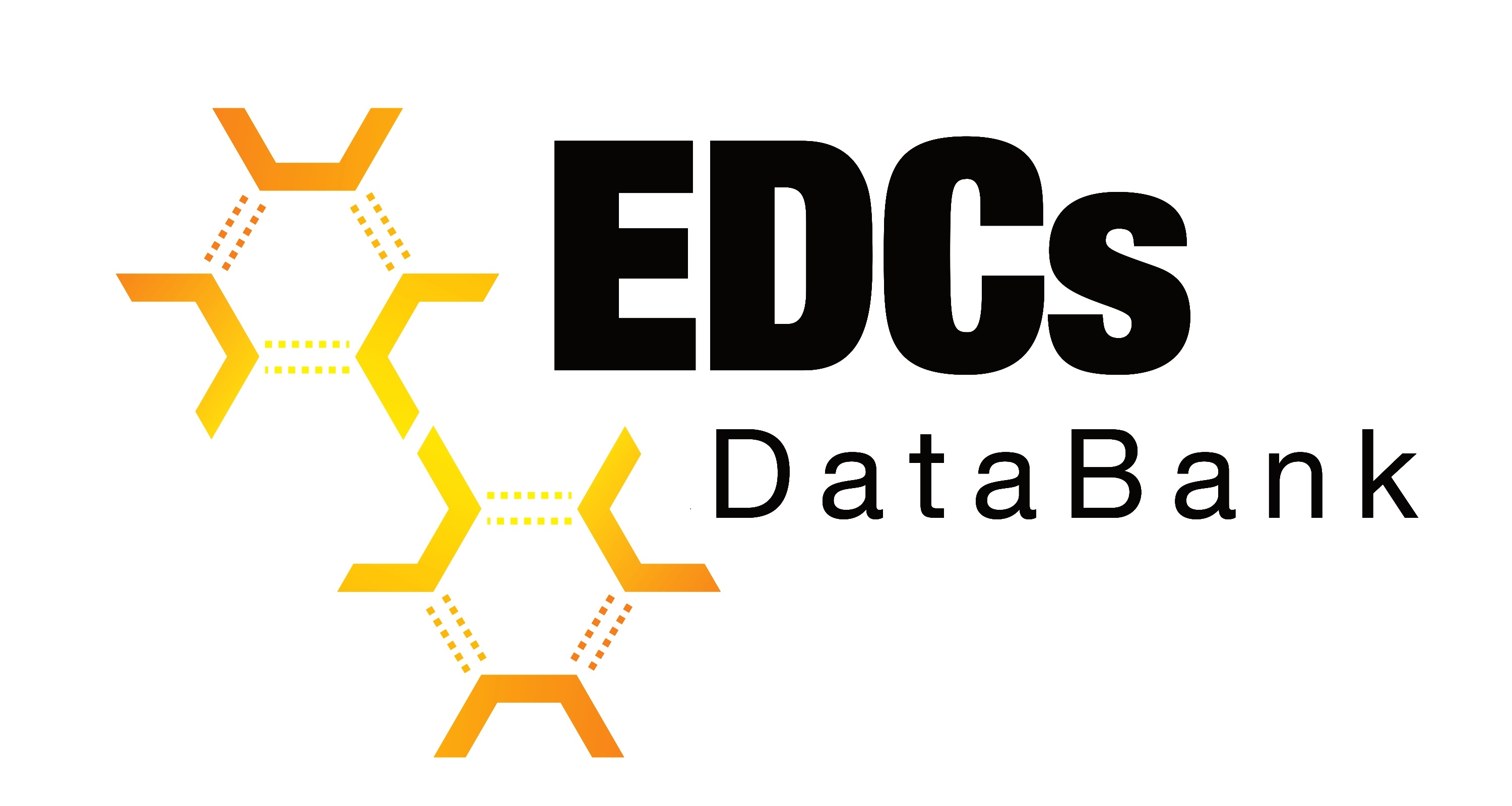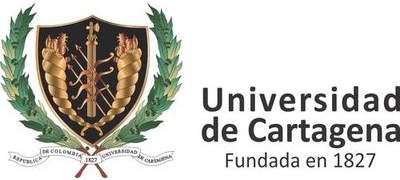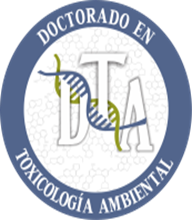4-hydroxy-2',4',6'-trichlorobiphenyl
Synonyms: "4-hydroxy-2',4',6'-trichlorobiphenyl", "2,4,6-trichloro-4'-biphenylol", "OH-PCB-30", "2',4',6'-trichloro-4-biphenylol", "2',4',6'-trichloro-(1,1'-biphenyl)-4-ol", "4-(2,4,6-trichlorophenyl)phenol", "4'-OH-PCB-30".
Source: 4-hydroxy-2',4',6'-trichlorobiphenyl belongs to the hydroxylated metabolites of polychlorinated biphenyls (OH-PCBs).
Identifiers:
IUPAC Name: 4-(2,4,6-trichlorophenyl)phenol
CAS Number: 14962-28-8
PubChem ID: 105036
InChiKey: LTQJFLVGNGVJCX-UHFFFAOYSA-N
Canonical SMILES: C1=CC(=CC=C1C2=C(C=C(C=C2Cl)Cl)Cl)O
Structural Properties:
Molecular Formula: C12H7Cl3O
Molecular Weight: 273.537
Pharmacophore Features:
Number of bond donors: 1
Number of bond acceptors: 1
Number of atoms different from hydrogen: 16
Downloads
2D structure (.sdf)
3D structure (.sdf)
3D structure (.mol2)
3D structure (.pdb)
3D structure (.pdbqt)
Search Similar molecules
Evidence Supporting This Chemical as an Endocrine Disruptor
TEDX List of Potential Endocrine Disruptors

Gierthy JF, Arcaro KF, Floyd M. 1997. Assessment of PCB estrogenicity in a human breast cancer cell line. Chemosphere 34(5-7):1495-1505. DOI: 10.1016/S0045-6535(97)00446-3. URL: http://www.sciencedirect.com/science/article/pii/S0045653597004463?via%3DihubJansen HT, Cooke PS, Porcelli J, Liu T-C, Hansen LG. 1993. Estrogenic and antiestrogenic actions of PCBs in the female rat: In vitro and in vivo studies. Reprod Toxicol 7(3):237-248. DOI: 10.1016/0890-6238(93)90230-5. URL: https://www.sciencedirect.com/science/article/pii/0890623893902305.
Jin L, Tran DQ, Ide CF, McLachlan JA, Arnold SF. 1997. Several synthetic chemicals inhibit progesterone receptor-mediated transactivation in yeast. Biochemical & Biophysical Research Communications 233(1):139-146. DOI: 10.1006/bbrc.1997.6417. URL: https://www.sciencedirect.com/science/article/pii/S0006291X97964172.
Kester MH, Bulduk S, Tibboel D, Meinl W, Glatt H, Falany CN, Coughtrie MW, Bergman A, Safe SH, Kuiper GG, Schuur AG, Brouwer A, Visser TJ. 2000 . Potent inhibition of estrogen sulfotransferase by hydroxylated PCB metabolites: a novel pathway explaining the estrogenic activity of PCBs. Endocrinology 141(5):1897?1900. DOI: 10.1210/endo.141.5.7530. URL: https://academic.oup.com/endo/article/141/5/1897/2988537.
Kramer VJ, Giesy JP. 1999. Specific binding of hydroxylated polychlorinated biphenyl metabolites and other substances to bovine calf uterine estrogen receptor: structure-binding relationships. Sci Total Environ 233(1-3):141-161. DOI: 10.1016/S0048-9697(99)00221-1. URL: https://www.sciencedirect.com/science/article/pii/S0048969799002211.
Soto AM, Sonnenschein C, Chung KL, Fernandez MF, Olea N, Serrano FO. 1995. The E-SCREEN assay as a tool to identify estrogens: An update on estrogenic environmental pollutants. Environ Health Perspect 103 (Suppl. 7):113-122. DOI: 10.2307/3432519 . URL: https://www.ncbi.nlm.nih.gov/pmc/articles/PMC1518887/.
External Links


2D-structure

3D-structure




